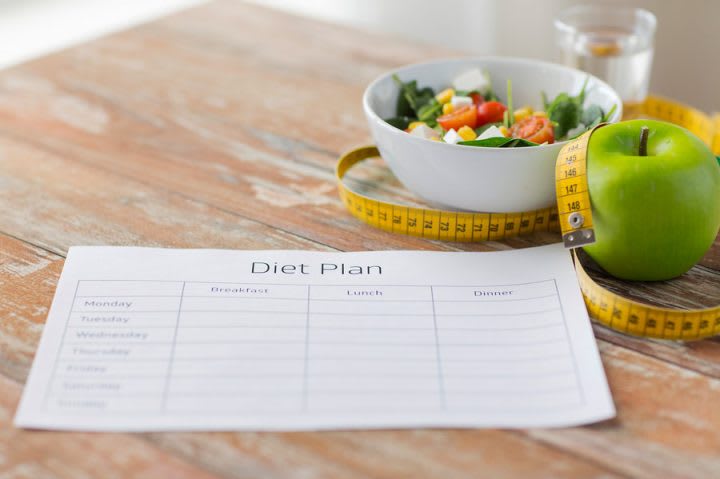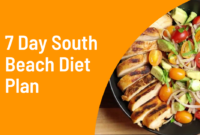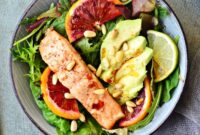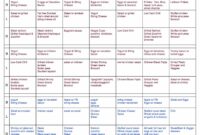South Beach Diet Phase 2 foods represent a crucial stage in this popular weight-loss plan. This phase introduces a wider variety of foods compared to the initial restrictive phase, focusing on incorporating healthy fats and carefully selected carbohydrates to promote sustainable weight management and improved overall health. Understanding the permitted and restricted food groups is key to success, as is mastering the art of preparing delicious and nutritious meals that align with the diet’s principles.
This guide delves into the specifics of Phase 2, providing a comprehensive overview of allowed and prohibited foods, offering sample meal plans and recipes, and addressing common challenges faced by dieters. We aim to equip you with the knowledge and tools to navigate this phase effectively, fostering a positive and rewarding dietary experience.
Understanding Phase 2 of the South Beach Diet
Phase 2 of the South Beach Diet marks a transition from the initial, more restrictive phase, allowing for a gradual expansion of food choices while still maintaining a focus on healthy eating habits. This phase is designed to promote sustainable weight loss and improved overall health by introducing a wider variety of nutrient-rich foods.
Core Principles of Phase 2
The core principles of Phase 2 revolve around incorporating more healthy carbohydrates back into the diet while continuing to restrict unhealthy fats and sugars. This balanced approach ensures continued weight loss while preventing the plateaus often associated with overly restrictive diets. Emphasis remains on consuming lean proteins, healthy fats, and complex carbohydrates that provide sustained energy and essential nutrients.
Dietary Restrictions and Allowances in Phase 2
Phase 2 relaxes some of the restrictions imposed during Phase 1. While high-glycemic index foods like white bread, sugary cereals, and processed snacks remain off-limits, it allows for the introduction of certain fruits, whole grains, and legumes. Foods rich in healthy fats, lean proteins, and non-starchy vegetables continue to be encouraged. This phase introduces a more flexible approach, enabling greater variety in meal planning while still adhering to the diet’s core principles.
Comparison of Phase 2 to Phase 1
The key difference between Phase 1 and Phase 2 lies in the inclusion of a wider range of carbohydrates. Phase 1 severely restricts carbohydrates to minimize insulin spikes and promote fat burning. Phase 2 gradually reintroduces healthy carbohydrates like whole grains and fruits, providing more energy and nutritional variety. Phase 1 is more restrictive and focused on rapid initial weight loss, whereas Phase 2 focuses on sustainable weight management and long-term lifestyle changes.
Sample Daily Meal Plan for Phase 2
A sample daily meal plan for Phase 2 could include:
Breakfast: Oatmeal with berries and a sprinkle of nuts.
Lunch: Salad with grilled chicken or fish, and a light vinaigrette dressing.
Dinner: Baked salmon with roasted vegetables (broccoli, asparagus, bell peppers).
Snacks: A handful of almonds, a piece of fruit (apple, pear, orange). This provides a balanced intake of protein, healthy fats, and complex carbohydrates throughout the day.
Food Groups, Allowed Foods, Sample Recipes, and Nutritional Benefits
| Food Group | Allowed Foods | Sample Recipes | Nutritional Benefits |
|---|---|---|---|
| Lean Protein | Chicken breast, fish (salmon, tuna), turkey, beans, lentils | Grilled chicken salad, baked salmon with lemon and herbs, lentil soup | Supports muscle growth, satiety, and overall metabolic function. |
| Healthy Fats | Avocado, nuts (almonds, walnuts), olive oil, seeds (chia, flax) | Avocado toast (whole-wheat bread), salad with olive oil dressing, trail mix | Provides essential fatty acids, supports hormone production, and promotes satiety. |
| Complex Carbohydrates | Whole-wheat bread, brown rice, quinoa, oats, most fruits (in moderation) | Oatmeal with berries, brown rice with grilled chicken, quinoa salad | Provides sustained energy, fiber, and essential vitamins and minerals. |
| Non-Starchy Vegetables | Spinach, broccoli, asparagus, cauliflower, peppers, zucchini | Steamed vegetables, roasted vegetables, vegetable stir-fry | Rich in vitamins, minerals, and antioxidants; promotes digestive health. |
Allowed Foods in South Beach Diet Phase 2
Phase 2 of the South Beach Diet marks a transition to a more diverse range of foods while still maintaining a focus on healthy fats, lean proteins, and low-glycemic carbohydrates. This phase allows for a wider variety of fruits and vegetables, and a gradual reintroduction of some healthy carbohydrates. Understanding the permitted food groups is crucial for successful weight management and improved overall health.
Permitted Food Groups in Phase 2
Phase 2 significantly expands the food choices compared to Phase 1. The diet emphasizes lean protein sources, healthy fats, and carefully selected carbohydrates. Fruits and vegetables, previously limited in Phase 1, now play a more substantial role. Whole grains are still largely restricted.
Lean Protein Sources in Phase 2
Lean protein is fundamental to the South Beach Diet, contributing to satiety and muscle preservation. Acceptable sources include fish (salmon, tuna, cod), poultry (chicken breast, turkey breast), lean cuts of beef and pork (loin, sirloin), eggs, beans, and lentils. Processed meats, such as sausages and bacon, remain restricted due to their high sodium and saturated fat content. Portion sizes should be tailored to individual caloric needs. For example, a typical serving might be 4-6 ounces of fish or poultry.
Healthy Fats Allowed in Phase 2
Healthy fats are essential for overall health and are incorporated into Phase 2 in moderation. Examples include olive oil (1-2 tablespoons per day), avocados (½ – 1 per day), nuts (a small handful, about 1 ounce), and seeds (chia, flax, sunflower – about 1 tablespoon). These fats contribute to satiety and provide essential fatty acids. Overconsumption should be avoided to maintain a healthy calorie balance.
Suitable Carbohydrate Sources in Phase 2
Phase 2 introduces a wider selection of carbohydrates, but the focus remains on low-glycemic index options. These carbohydrates are digested and absorbed more slowly, preventing rapid spikes in blood sugar levels. Suitable choices include non-starchy vegetables (broccoli, spinach, asparagus), berries (strawberries, blueberries, raspberries – a small portion, about ½ cup), and small portions of whole-wheat products (in moderation). The emphasis remains on limiting high-glycemic carbohydrates, such as white bread and sugary cereals.
Glycemic Index of Fruits and Vegetables
The glycemic index (GI) measures how quickly a carbohydrate-containing food raises blood glucose levels. Lower GI foods are preferred in Phase 2.
| Food | Glycemic Index (GI) |
|---|---|
| Watermelon | 76 |
| Banana | 51 |
| Orange | 43 |
| Apple | 36 |
| Broccoli | 10 |
| Spinach | 15 |
| Green Beans | 15 |
Foods to Avoid in South Beach Diet Phase 2
Phase 2 of the South Beach Diet focuses on refining your eating habits established in Phase 1. While it introduces a wider variety of foods, certain categories remain restricted to ensure continued weight loss and improved metabolic health. Understanding these restrictions is key to successfully navigating this phase.
Restricted Carbohydrates in Phase 2
High-glycemic index carbohydrates, those that cause rapid spikes in blood sugar, remain largely off-limits during Phase 2. This is because these carbohydrates can lead to increased insulin production, potentially hindering weight loss efforts and contributing to energy crashes. Examples include white bread, pastries, sugary cereals, and most processed foods containing refined grains. Focusing on low-glycemic options, like whole grains and vegetables, promotes sustained energy levels and aids in weight management.
Limitations on Certain Fruits and Vegetables
While fruits and vegetables are generally encouraged, some higher-sugar fruits are limited in Phase 2. This restriction isn’t about eliminating them entirely, but rather managing their consumption to control sugar intake. Fruits like bananas, mangoes, and grapes, while nutritious, contain relatively high amounts of sugar compared to lower-sugar options like berries. Similarly, certain starchy vegetables like potatoes and corn, while containing valuable nutrients, are also restricted due to their higher carbohydrate content. Prioritizing lower-sugar fruits and non-starchy vegetables helps maintain blood sugar stability.
Unhealthy Fats and Oils to Avoid
Trans fats and saturated fats remain restricted in Phase 2. Trans fats, often found in processed foods and fried items, are particularly detrimental to heart health. Saturated fats, while present in some healthy foods, should be consumed in moderation. The diet emphasizes healthy unsaturated fats from sources like olive oil, avocados, and nuts. Avoiding unhealthy fats contributes to cardiovascular health and overall well-being.
Processed Foods and Sugary Drinks
Processed foods, often laden with added sugars, unhealthy fats, and refined carbohydrates, are largely avoided in Phase 2. These foods provide minimal nutritional value while contributing significantly to weight gain and various health problems. Similarly, sugary drinks, including sodas, juices, and sweetened beverages, are excluded because of their high sugar content and empty calories. Choosing whole, unprocessed foods and water or unsweetened beverages supports better health outcomes.
List of Foods to Avoid in Phase 2
The following list summarizes the key food categories to limit or avoid during Phase 2 of the South Beach Diet:
- White bread and pastries
- Sugary cereals
- Most processed foods
- High-glycemic fruits (bananas, mangoes, grapes)
- Starchy vegetables (potatoes, corn)
- Trans fats
- Foods high in saturated fat (in excess)
- Sugary drinks (soda, juice, sweetened beverages)
Recipe Ideas for South Beach Diet Phase 2
Transitioning into Phase 2 of the South Beach Diet opens up a wider array of delicious and nutritious meal options. This phase focuses on incorporating more healthy fats and lean proteins while still limiting refined carbohydrates and sugars. The following recipes demonstrate how to create flavorful and satisfying meals that adhere to the Phase 2 guidelines.
Mediterranean Salmon with Roasted Vegetables
This recipe is rich in omega-3 fatty acids, lean protein, and a variety of vitamins and minerals from the colorful vegetables.
Ingredients: 1 salmon fillet (6 oz), 1 cup broccoli florets, ½ cup cherry tomatoes, ½ cup zucchini, 1 tbsp olive oil, 1 tsp lemon juice, ½ tsp dried oregano, salt and pepper to taste.
Instructions: Preheat oven to 400°F (200°C). Toss vegetables with olive oil, oregano, salt, and pepper. Spread on a baking sheet. Place salmon fillet on the same baking sheet. Drizzle salmon with lemon juice, salt, and pepper. Bake for 15-20 minutes, or until salmon is cooked through and vegetables are tender.
Nutritional Content (approximate): Protein: 35g, Fat: 20g (mostly healthy fats), Carbohydrates: 10g.
Chicken and Avocado Salad with Quinoa
This salad provides a balanced combination of lean protein, healthy fats, and complex carbohydrates, making it a perfect Phase 2 meal.
Ingredients: 4 oz grilled chicken breast (diced), ½ cup cooked quinoa, ½ avocado (diced), ¼ cup chopped red onion, ¼ cup chopped cilantro, 2 tbsp lime juice, 1 tbsp olive oil, salt and pepper to taste.
Instructions: Combine all ingredients in a bowl and mix gently. Season with salt and pepper to taste.
Nutritional Content (approximate): Protein: 30g, Fat: 15g (mostly healthy fats), Carbohydrates: 25g (primarily from quinoa).
Shrimp Scampi with Zucchini Noodles
This low-carb alternative to traditional scampi uses zucchini noodles to reduce carbohydrate intake while maintaining a delicious and satisfying flavor profile.
Ingredients: 6 oz shrimp (peeled and deveined), 2 medium zucchini (spiralized into noodles), 2 cloves garlic (minced), 2 tbsp olive oil, 2 tbsp lemon juice, ¼ cup chopped parsley, salt and pepper to taste.
Instructions: Heat olive oil in a pan over medium heat. Add garlic and cook for 1 minute. Add shrimp and cook for 2-3 minutes per side, until pink and cooked through. Stir in zucchini noodles and cook for 2-3 minutes, until tender-crisp. Stir in lemon juice and parsley. Season with salt and pepper to taste.
Nutritional Content (approximate): Protein: 30g, Fat: 18g (mostly healthy fats), Carbohydrates: 5g.
Sample Phase 2 Meal Visual Representation
Imagine a vibrant plate featuring the Mediterranean Salmon with Roasted Vegetables. The salmon is a beautiful pinkish-orange, nestled beside bright green broccoli florets, red cherry tomatoes, and pale green zucchini. The textures contrast nicely – the flaky salmon, the slightly crisp vegetables, and the slightly soft zucchini. The colors are fresh and appealing, creating a visually balanced and appetizing meal.
Ingredient Substitution Tips for Phase 2 Recipes
Many ingredients can be substituted in Phase 2 recipes while maintaining nutritional value. For example, chicken can be replaced with turkey or fish in the chicken salad. Quinoa can be substituted with brown rice (in moderation) or cauliflower rice for a lower-carb option. Different vegetables can be used based on preference and availability, ensuring a variety of nutrients. Remember to always prioritize whole, unprocessed ingredients.
Potential Challenges and Solutions in Phase 2
Phase 2 of the South Beach Diet, while offering a wider variety of foods than Phase 1, still presents unique challenges. Many individuals find this transition period demanding, requiring adjustments in both dietary habits and lifestyle. Successfully navigating this phase hinges on understanding these potential hurdles and implementing effective strategies to overcome them. This section outlines common difficulties and provides practical solutions for a smoother and more sustainable experience.
Overcoming Cravings and Maintaining Motivation
Sustaining motivation and managing cravings are crucial aspects of successful weight management on any diet, and the South Beach Diet is no exception. Phase 2, with its increased food choices, can paradoxically heighten the temptation to stray from the plan. Strategies for maintaining motivation include setting realistic goals, tracking progress (using a journal or app), and rewarding oneself with non-food related treats upon reaching milestones. Addressing cravings requires identifying triggers and developing healthy coping mechanisms. This might involve increasing water intake, engaging in physical activity, or finding healthy substitutes for high-sugar or high-fat foods. For example, if a craving for sweets arises, opting for a small portion of berries or a sugar-free dessert might satisfy the urge without derailing the diet.
Managing Hunger and Staying Satisfied
The feeling of hunger is a common challenge in any weight-loss program. Phase 2, while offering more food variety, might still leave some individuals feeling unsatisfied if not approached strategically. Prioritizing protein and healthy fats in meals and snacks is essential for promoting satiety. Including lean protein sources like fish, chicken breast, beans, and lentils, along with healthy fats from avocados, nuts, and olive oil, helps to regulate blood sugar levels and keep hunger pangs at bay. Furthermore, consuming plenty of fiber-rich vegetables helps to increase the volume of meals, contributing to a feeling of fullness. Planning meals and snacks in advance can also help to avoid impulsive, unhealthy choices when hunger strikes.
Incorporating Phase 2 into a Busy Lifestyle
The demands of a busy lifestyle can often make adhering to a strict diet plan challenging. Time constraints frequently lead to reliance on convenience foods, many of which are incompatible with the South Beach Diet’s principles. Pre-planning and meal prepping are crucial for success in this phase. Preparing meals and snacks in advance, such as cooking a large batch of chicken or preparing individual salad containers, allows for easy access to healthy options throughout the week. Investing in quick-cooking ingredients, such as pre-cut vegetables or canned beans, can also save valuable time without compromising dietary adherence. Furthermore, packing healthy snacks for work or on-the-go helps to prevent impulsive unhealthy food choices.
Managing Social Situations
Social gatherings and dining out can pose significant challenges when following a restrictive diet. Planning ahead and communicating dietary needs to hosts or restaurant staff is essential. Choosing restaurants that offer healthy options or selecting dishes that align with Phase 2 guidelines helps to navigate social situations without feeling deprived. For example, opting for grilled fish or chicken with a side salad instead of a creamy pasta dish is a healthier choice that fits within the dietary parameters. It is also important to remember that a single deviation from the plan does not necessitate abandoning the entire diet. Maintaining a positive attitude and focusing on overall adherence to the plan is key to long-term success.
Summary
Successfully navigating the South Beach Diet’s Phase 2 requires a balanced approach, combining knowledge of permitted foods with mindful meal planning and a commitment to healthy eating habits. By understanding the nuances of this phase—from choosing appropriate protein sources and healthy fats to managing carbohydrate intake—individuals can effectively achieve their weight-loss goals while nurturing their overall well-being. Remember consistency and a positive mindset are key to long-term success.




